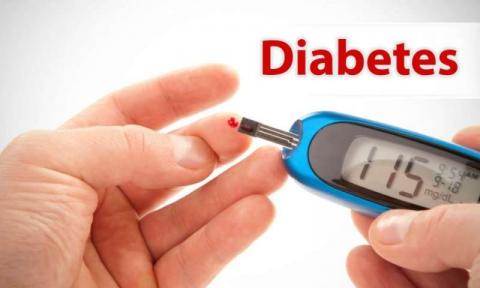+1(209) 348-9544
order@myessayservices.com
+1(209) 348-9544
order@myessayservices.com
![]() Are you an under-graduate, in College, Bachelors or under-taking your Post graduate studies and need someone to help write your essay or research? We offer premium quality essay writing help. All our papers are original, 0% plagiarized & uniquely written by our dedicated Masters specialists. My Essay Services is an experienced service with over 9 years experience in research writing of over 97,000 essays over the years. You will receive a plagiarism check certificate that confirms originality for any essay you order with My Essay Services. Fill the calculator on your right to begin placing your order now!
Are you an under-graduate, in College, Bachelors or under-taking your Post graduate studies and need someone to help write your essay or research? We offer premium quality essay writing help. All our papers are original, 0% plagiarized & uniquely written by our dedicated Masters specialists. My Essay Services is an experienced service with over 9 years experience in research writing of over 97,000 essays over the years. You will receive a plagiarism check certificate that confirms originality for any essay you order with My Essay Services. Fill the calculator on your right to begin placing your order now!

 Diabetes is a complex group of disorders that are often characterized by persistent hyperglycemia. In fact, it is important to understand that the two most common forms of diabetes are often type 1 diabetes and type 2 diabetes. Type 1 diabetes is also known as insulin-dependent diabetes while type 2 diabetes is known as non-insulin dependent diabetes (Perez, 1988). However, it is of the essence to understand that both are a combination of genetic as well as environmental risk factors.
Diabetes is a complex group of disorders that are often characterized by persistent hyperglycemia. In fact, it is important to understand that the two most common forms of diabetes are often type 1 diabetes and type 2 diabetes. Type 1 diabetes is also known as insulin-dependent diabetes while type 2 diabetes is known as non-insulin dependent diabetes (Perez, 1988). However, it is of the essence to understand that both are a combination of genetic as well as environmental risk factors.
According to Perez (1998) diabetes has no definite cause in terms of environmental and heredity factors. This supports the fact that indeed that 64% of persons that have diabetes in their families, only 20% of them often have diabetes. It is essential to know that unlike some traits, diabetes does not seem to be inherited in a simple pattern. However, there are some personages that are born, and they are often more likely to develop diabetes as compared to other persons.
The Type 1, as well as Type 2 diabetes, have different causes; however, there are two important factors when it comes to both of them. One inherits a predisposition to the disease and then there is something that exists in the environment that triggers it (Bennet & Franks, 2015). This is the reason according to the pie chart 11 and 12; the people that have diabetes in their family stand at 64% and those that do not stand at 36%. From this populace, the number of persons that have diabetes, heart disease, high blood pressure and obesity stands at 20% whereas those that do not have it stand at 80%.
The reason as to why the numbers do not match exactly is because diabetes is not inherited in a single pattern and environment is important in triggering it. In fact, it is important to say that genes are often not enough. One proof is identical twins who have identical genes. However, one might have type 1 diabetes, and the other gets the disease at most half of the time. Notwithstanding, when it comes to type 2 diabetes, the risk is at most 3 out of four (Bennet & Franks, 2015).
In most cases, when it comes to type 1 diabetes, people need to inherit risk factors from both parents. It is critical to realize that because most people that are at risk do not get diabetes, researchers often want to understand what the environmental triggers are. One such trigger has been said to be cold weather. Research has shown that type 1 diabetes often develops in winter than summer and is often common in places that have cold climates. It is necessary to realize that type 2 diabetes often has a stronger link to family history lineage as compared to type 1.
However, it also depends on environmental factors in order to trigger the disease. Lifestyle influences are known to have an influence on the development of type 2 diabetes. It is important to comprehend that obesity tends to run in families (Pyke, 1978). Research according to Pyke (1978) supports the fact that there exists different factors in regards to diabetes causes and this might lead to a decrease when it comes to people with diabetes in their families and those that actually get diabetes.
Read about the effects of Diabetes
Therefore, there is support of the pie chart 11 and 12. According to the pie chart, it can be claimed that those 64 % only translate into 20% because of environmental factors. It is not every person that has the genes and susceptibility to diabetes both type 1 and type 2-get it. This is because they might not have been introduced to the relevant and required environmental factors that are required in order to acquire the disease. However, there is a need for more research on the subject in order to get the matter clear and to find exactly which environmental triggers a person should avoid in order not to get diabetes.
References
Perez, C. A., Diabetic Association of the Caribbean., & Scientific Symposium of the Diabetic Association of the Caribbean. (January 01, 1988). Heredity versus environmental in diabetes mellitus. Boletin De La Asociación Médica De Puerto Rico, 80, 1, 4-9.
Bennet, L., Lindblad, U., & Franks, P. W. (January 01, 2015). A family history of diabetes determines poorer glycaemic control and younger age of diabetes onset in immigrants from the Middle East compared with native Swedes. Diabetes & Metabolism, 41, 1, 45-54.
Pyke, D. A. (January 01, 1978). Heredity and the aetiology of diabetes. The Netherlands Journal of Medicine, 21, 5, 203-4.
Post 1
 According to the Wulf and Matuszewski (2013), only 3% of patients using sulfonamide antibiotics acquire an allergic reaction. Furthermore, most of the latter includes maculopapular rash, a mild reaction that has no major consequences. Sulfonylureas, a non-antibacterial sulfonamide, does not have the structural features responsible for sulfonamide allergies (WATAG, 2014). Sulfonamides are compounds containing a SO2NH2 moiety (Baldo, 2013). Baldo (2013) further states that even though numerous case reports show that patiesnts allergic to sulfonamides may be at a higher risk of developing an allergic reaction to Sulfonylureas, there is still no sufficient data from well designed trials. In other words, there is no evidence yet for cross-reactivity between different types of sulfonamides (WATAG, 2014).
According to the Wulf and Matuszewski (2013), only 3% of patients using sulfonamide antibiotics acquire an allergic reaction. Furthermore, most of the latter includes maculopapular rash, a mild reaction that has no major consequences. Sulfonylureas, a non-antibacterial sulfonamide, does not have the structural features responsible for sulfonamide allergies (WATAG, 2014). Sulfonamides are compounds containing a SO2NH2 moiety (Baldo, 2013). Baldo (2013) further states that even though numerous case reports show that patiesnts allergic to sulfonamides may be at a higher risk of developing an allergic reaction to Sulfonylureas, there is still no sufficient data from well designed trials. In other words, there is no evidence yet for cross-reactivity between different types of sulfonamides (WATAG, 2014).
Post review
Post 2
The thyroid gland releases T4 and T3 in response to the Thyroid Stimulating Hormone (TSH) that is secreted by the pituitary gland. The Thyroid Releasing Hormone (TRH) mediates the secretion of TSH that is secreted by the hypothalamus (Edmunds, 2014). T3 is responsible for the physiological effects associated with the thyroid hormone.
Post 3
Hypothyroidism is a lower than normal level of thyroid hormone. It occurs mostly in women with symptoms such as lethargy and menstrual disturbances. If untreated, fatal conditions include myxedema (Edmunds, 2014). Conversely, hyperthyroidism relates to excessive secretion of the thyroid hormone. It is also called thyrotoxicosis and leads to greve’s disease, toxic nodular goiter, as well as iodide-induced hyperthyroidism.
Post 4
Insulin may is used differently in insulin therapy for Type I and Type II diabetes mellitus. Insulin acts by lowering the concentration of glucose in the blood with subsequent diffusion of glucose into target tissues. It does this by binding to certain receptors on each cell. Insulin also inhibits the action of lipoprotein lipase, thereby preventing the release of fatty acids in to the bloodstream. Further, insulin stimulates the transport and storage of glucose in form of triglycerides in adipose tissues. Thus, the medical practitioner will evaluate the level of insulin production and utilization in the two types of diabetes. Medical practitioners’ asses the level of insulin deficiency in the body or whether the insulin produced cannot be utilized by the body cells (Edmund, 2014).
References
Baldo, B. A., & Pham, N. H. (2013). Drug allergy: Clinical aspects, diagnosis, mechanisms, structure-activity relationships. New York, NY: Springer.basis of therapeutics, (12th.ed.). New York:The McGraw-Hill Companies, Inc.
Brunton, L., Chabner, L., & Knollman, B. (2011). Goodman & Gillman’s the pharmacological
Edmunds. M. (2014). Pharmacology for the primary care provider, (4th.ed.). St. Louis, MO:Elsevier. Retrieved from https://digital bookshelf.southuniversity.edu/#books/ Western Australian Therapeutic Advisory Group (WATAG). (2014). Allergies to Sulfonamide Antibiotics and Cross-reactivities. Retrieved from < http://www.watag.org.au/wamsg/docs/wamsg_alert_sulfonamide.pdf> Accessed July 13, 2014
Wulf A R & Matuszewski K A. (2013). Sulfonamide Cross-Reactivity: Is there evidence to support broad cross-allergenicity? Retrieved from < http://www.ajhp.org/content/70/17/1483.abstract> Accessed July 13, 2014
Browse More Essay Topics 24/7/365 Support 11+ Yrs in Essay Writing Pay for Quality not Quantity Score that A+ Grade
Affordable Papers
Research Paper for Sale
Cheap Research Papers
Buy Term Papers
Buy Research Paper
Write My Paper
Buy an Essay
Cheap Essay Writer
Write my Essay
Thesis Help
Dissertation Help
Paper Writing Service
Pay for Homework
Pay for Research Paper
Do My Essay for Me
Pay for Essay
College Papers for Sale
Do My Homework for Me
College Essays for Sale
Buy Research Papers Online
Buy College paper
Client: "(Berlin, G.K., CA)"
Topic title:"Leadership shortfalls in Blue Chips"
Discipline: "Economics"
Pages: 5, (APA)
" Awesome, the writer delivered it as required by the professor. They also sent me a plagiarism & grammar report Wow!. I was worried about how the essay would turn up but this is exactly what wanted. Thank you and will be back with a longer essay"
Accounting Research Papers
Business Research Papers
Communication Research Papers
Computer Science Research Papers
Economic Research Papers
Film Studies Research Papers
Finance Research Papers
Geography Research Papers
History Essays
Psychology Research Papers
Political Science Research Papers
Nursing Research Papers
Mathematics Essays
Management Essays
Literature Essays
Law Essays
World Affairs Essays
Technology Essays
Sociology Essays
Science Essays
Religion Essays
+1(209) 348-9544
Terms
Privacy
Sitemap
Frequently Asked Questions
0% Plagiarism Guarantee
Money Back Guarantee
Revision Policy
